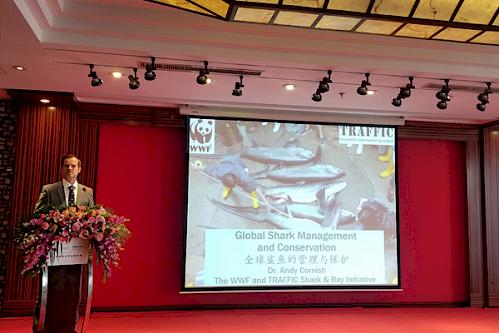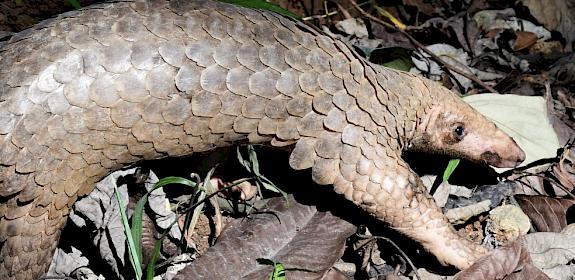Chinese enforcement agencies enhance their shark fin identification skills
Beijing, China, February 2018—More than 50 frontline enforcement officers from China’s Fishery Department of the Ministry of Agriculture (FAD) attended a fin identification and shark trade workshop hosted by relevant experts last week in Beijing.
Co-organized by China’s CITES[1] Management Authority and TRAFFIC, the training aimed to help Chinese government authorities improve their shark and ray identification techniques and learn more about international is shark and ray products.
Twelve shark and eleven mobulid ray species are listed in Appendix II of CITES—which means their international trade is regulated under a system of import, export and re-export permits.
Existing Chinese regulations go beyond the provisions of CITES requirements, but precise identification of the species and products in trade is a highly specialised skill that needs to be mastered by customs officers.

Expert tuition was provided by speakers from China’s Fisheries Department, Nova Southeastern University, Hong Kong Special Administrative Region’s Agriculture, Fisheries and Conservation Department (AFCD), BLOOM, China Aquatic Products Processing and Marketing Alliance, WWF Hong Kong and TRAFFIC.
Topics covered included the identification of shark fins and mobulid ray gill plates for CITES-listed species, implementation of CITES and trade management of sharks and other marine species, and shark fin trade in mainland China, Hong Kong and Taiwan.
Dr Debra Abercrombie from Nova Southeastern University spoke about identification of shark fins, which was followed by a practical hands-on training session where she was assisted by WWF Hong Kong’s Dr Andrew Cornish, AFCD’s Timothy Lam and Stan Shea from BLOOM.
Following the training session, all the shark fin products used were scanned by a research centre so the details could be entered into a database to enable customs officers to identify shark fin products.
The workshop was the first time some of the trainees had been able to practice their identification skills across a wide range of relevant shark fin products and many suggested extending the opportunities to carry out such training given the importance of shark fins in the marketplace.
“China is one of the largest importers of shark fins and mobulid ray gill plates. We need to ensure that the imported products are harvested, traded and consumed in a legal and sustainable fashion,” said Zhou Fei, Head of TRAFFIC’s China Office and Wildlife Trade Programme of WWF China. “TRAFFIC and WWF stand ready to support the Chinese government and enforcement agencies in the management of international trade in sharks and manta rays and related conservation work”.
According to the International Union for the Conservation of Nature’s (IUCN’s) Shark Specialist Group, 24% of the world’s Chondrichthyan(cartilaginous) fishes are threatened with extinction.
The workshop was supported by WWF-Netherlands.
Notes:
[1] CITES is the Convention on International Trade in Endangered Species of Wild Fauna and Flora. It is an international agreement between governments, which aim to ensure that international trade in specimens and wild animals and plants does not threaten their survival in the wild.




